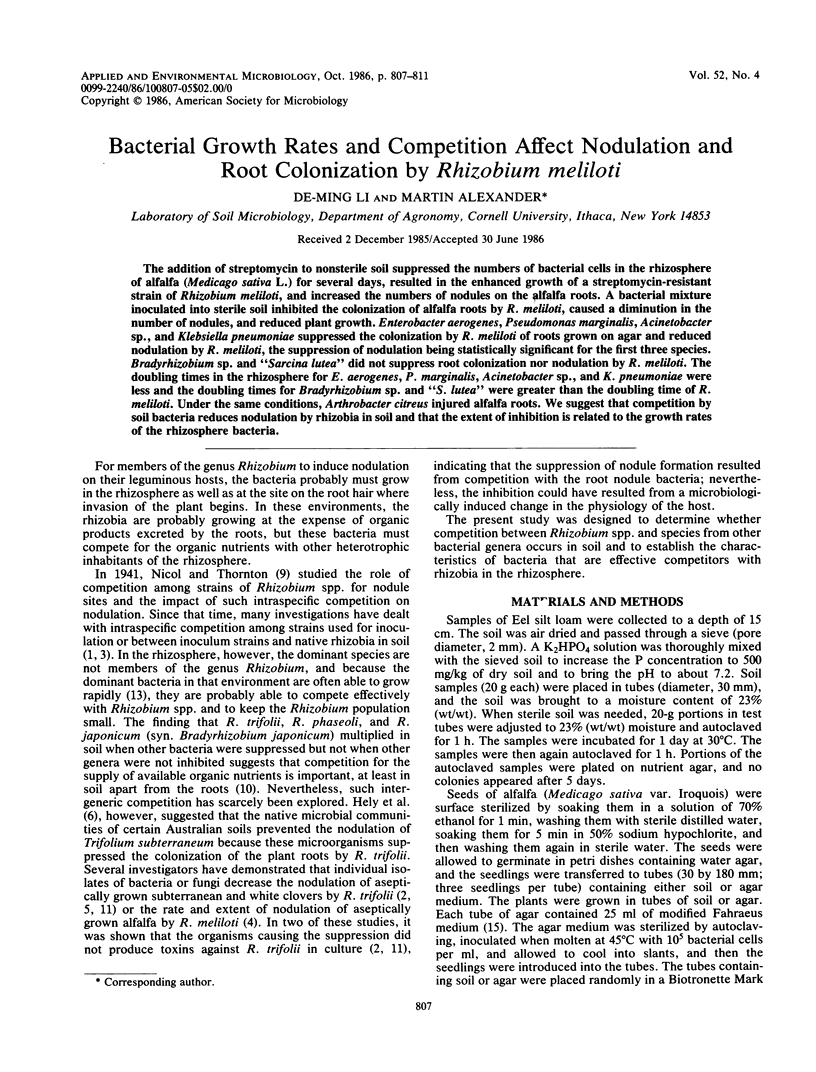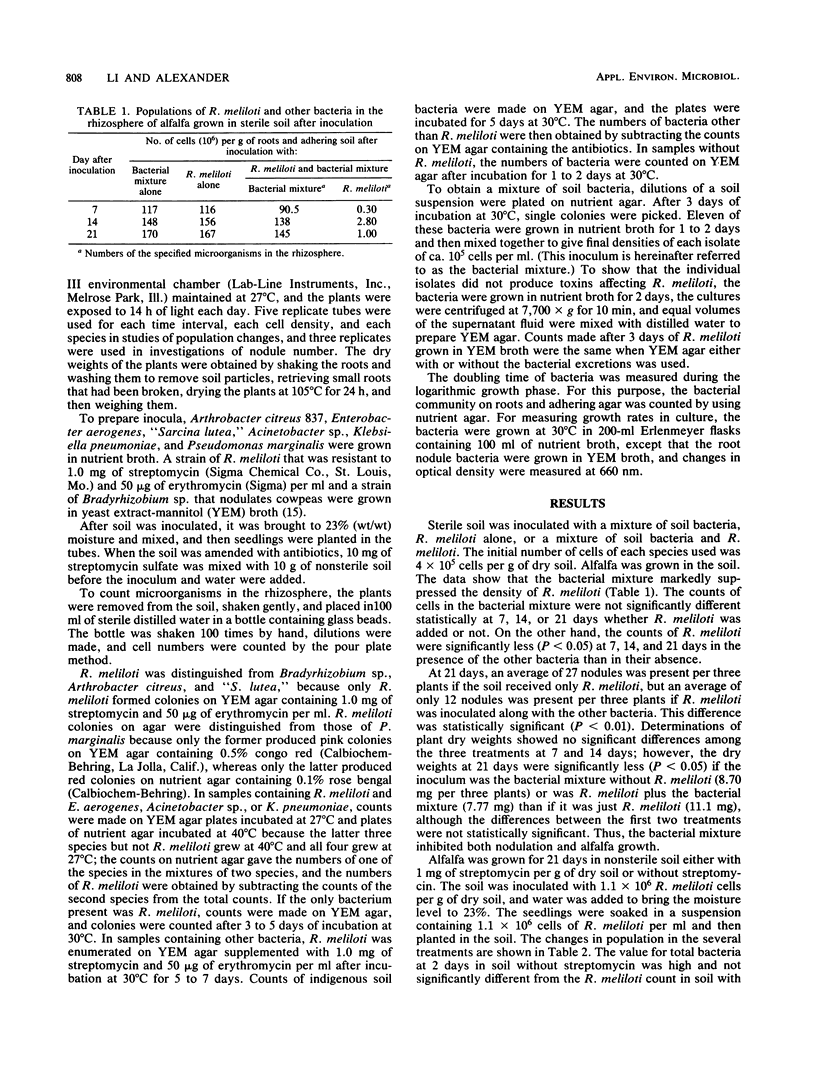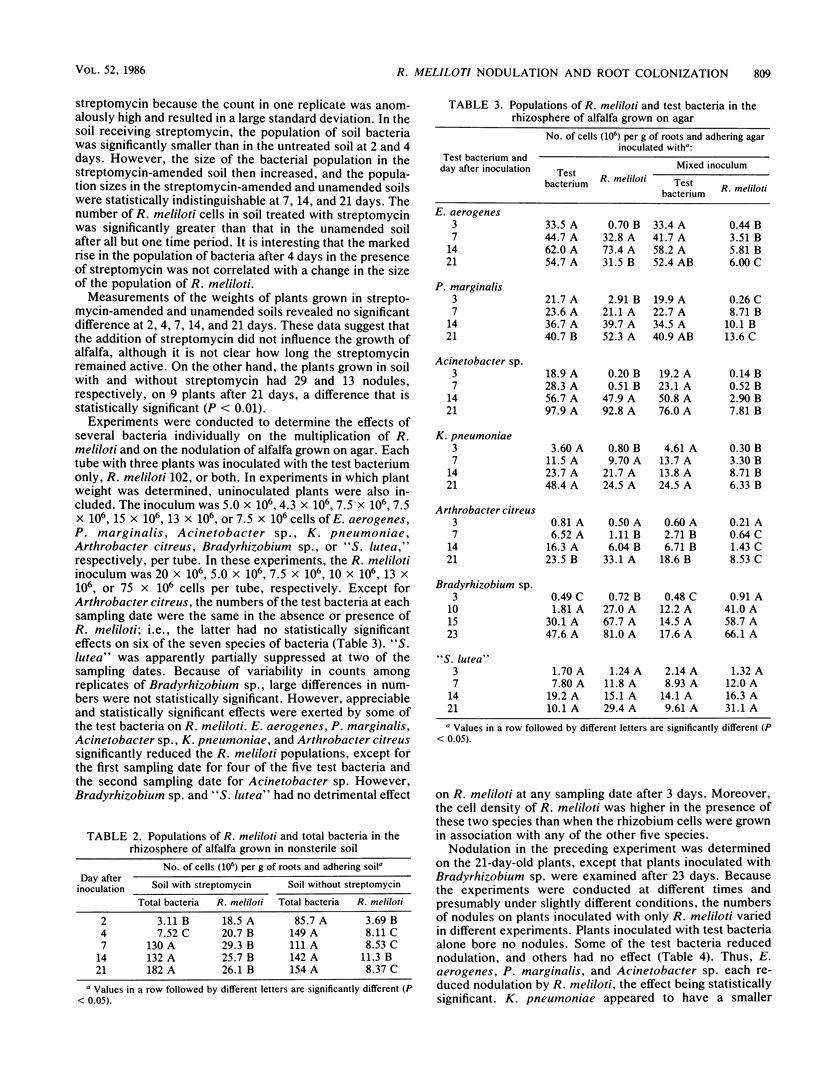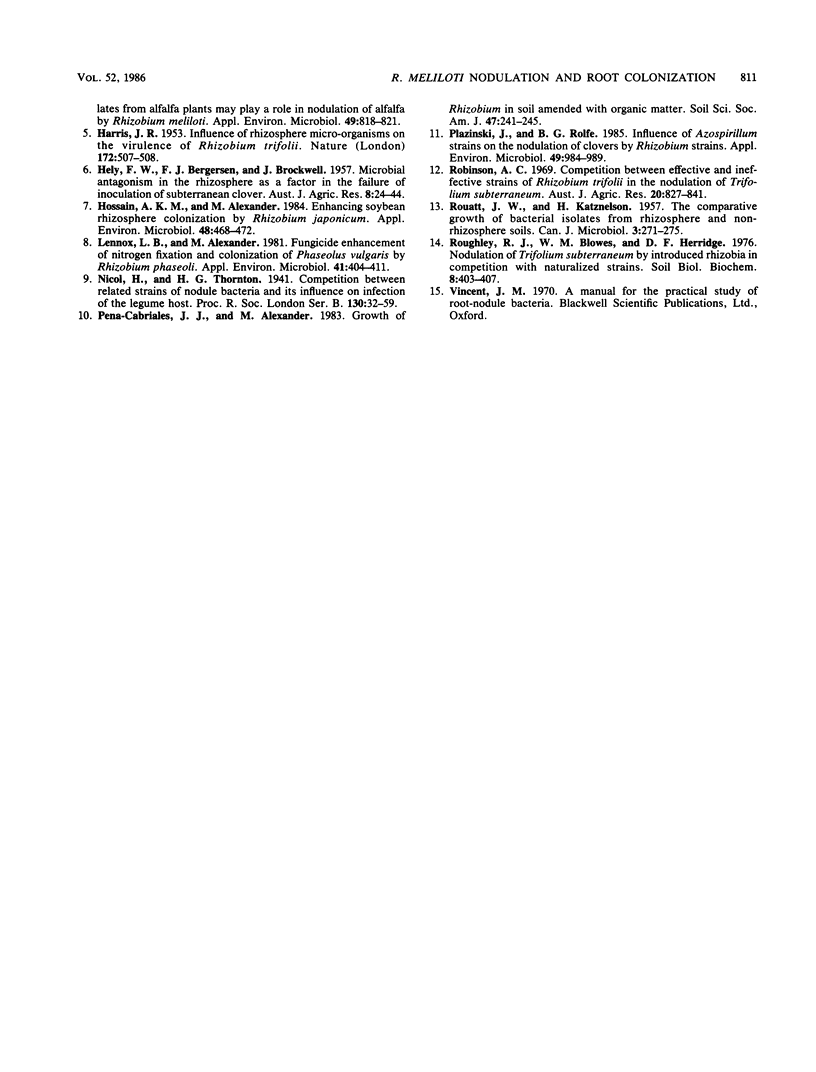Abstract
The addition of streptomycin to nonsterile soil suppressed the numbers of bacterial cells in the rhizosphere of alfalfa (Medicago sativa L.) for several days, resulted in the enhanced growth of a streptomycin-resistant strain of Rhizobium meliloti, and increased the numbers of nodules on the alfalfa roots. A bacterial mixture inoculated into sterile soil inhibited the colonization of alfalfa roots by R. meliloti, caused a diminution in the number of nodules, and reduced plant growth. Enterobacter aerogenes, Pseudomonas marginalis, Acinetobacter sp., and Klebsiella pneumoniae suppressed the colonization by R. meliloti of roots grown on agar and reduced nodulation by R. meliloti, the suppression of nodulation being statistically significant for the first three species. Bradyrhizobium sp. and “Sarcina lutea” did not suppress root colonization nor nodulation by R. meliloti. The doubling times in the rhizosphere for E. aerogenes, P. marginalis, Acinetobacter sp., and K. pneumoniae were less and the doubling times for Bradyrhizobium sp. and “S. lutea” were greater than the doubling time of R. meliloti. Under the same conditions, Arthrobacter citreus injured alfalfa roots. We suggest that competition by soil bacteria reduces nodulation by rhizobia in soil and that the extent of inhibition is related to the growth rates of the rhizosphere bacteria.
Full text
PDF




Selected References
These references are in PubMed. This may not be the complete list of references from this article.
- Barnet Y. M. The effect of rhizobiophages on populations of Rhizobium trifolii in the root zone of clover plants. Can J Microbiol. 1980 May;26(5):572–576. doi: 10.1139/m80-101. [DOI] [PubMed] [Google Scholar]
- HARRIS J. R. Influence of rhizosphere micro-organisms on the virulence of Rhizobium trifolii. Nature. 1953 Sep 12;172(4376):507–508. doi: 10.1038/172507a0. [DOI] [PubMed] [Google Scholar]
- Handelsman J., Brill W. J. Erwinia herbicola isolates from alfalfa plants may play a role in nodulation of alfalfa by Rhizobium meliloti. Appl Environ Microbiol. 1985 Apr;49(4):818–821. doi: 10.1128/aem.49.4.818-821.1985. [DOI] [PMC free article] [PubMed] [Google Scholar]
- Hossain A. K., Alexander M. Enhancing Soybean Rhizosphere Colonization by Rhizobium japonicum. Appl Environ Microbiol. 1984 Sep;48(3):468–472. doi: 10.1128/aem.48.3.468-472.1984. [DOI] [PMC free article] [PubMed] [Google Scholar]
- Lennox L. B., Alexander M. Fungicide Enhancement of Nitrogen Fixation and Colonization of Phaseolus vulgaris by Rhizobium phaseoli. Appl Environ Microbiol. 1981 Feb;41(2):404–411. doi: 10.1128/aem.41.2.404-411.1981. [DOI] [PMC free article] [PubMed] [Google Scholar]
- Plazinski J., Rolfe B. G. Influence of azospirillum strains on the nodulation of clovers by Rhizobium strains. Appl Environ Microbiol. 1985 Apr;49(4):984–989. doi: 10.1128/aem.49.4.984-989.1985. [DOI] [PMC free article] [PubMed] [Google Scholar]


